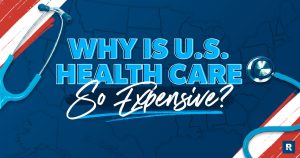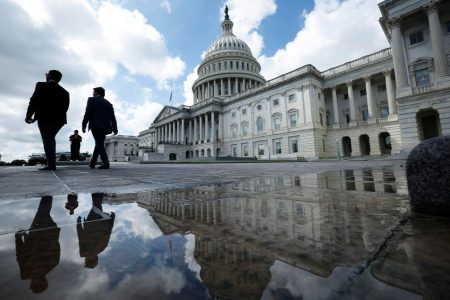While business leaders and accountants would like to believe that federal tax reform will be the priority issue for congressional leaders after the November elections, tax reform may need to be placed to the side until the U.S. debt ceiling and immigration policies are addressed. This would result in a level of uncertainty regarding federal tax payments surrounding the 2025 taxable year. However, all three priorities are interlinked, and the direction of federal income tax reform will likely be impacted based on the manner in which the debt ceiling and immigration policies are resolved.
Debt Ceiling
The United States debt ceiling was first instituted in 1917. Prior to passing the debt ceiling, Congress had to either authorize specific loans or allow the Treasury to issue certain debt instruments for specific purposes.
By instituting the debt ceiling, Congress limited the amount of debt the government could accrue without specific authorization from Congress. The debt ceiling only raises the limit on the amount of money the government can borrow to pay back commitments already agreed upon by Congress but does not include any additional spending initiatives. Raising the cap on the debt ceiling must be approved by a majority vote in both the Senate and the House of Representatives.
In recent years, political parties have begun to intertwine the debt ceiling cap increase with government spending, which has caused more debate and uncertainty. While, as previously explained, the debt ceiling increase does not provide the government with any additional spending, the significant increase in the national debt continues to create great concern in Congress. As a result, there is an argument that the debt ceiling should not be increased without requirements for additional fiscal responsibility regarding the federal budget.
If a debt ceiling cap increase is not passed, the Department of Treasury can take extraordinary measures over several months so that the US does not default. It goes without saying that default would be catastrophic given that the ability of the US Department of Treasury to no longer pay its bills, often referred to as the “X-date,” would cause significant disruptions in the financial markets and severe damage to the U.S. economy.
The most recent debate regarding the debt ceiling occurred in June of 2023, where the negotiations of House Speaker Kevin McCarthy with President Joe Biden to increase the debt ceiling ultimately resulted in the Speaker losing his House leadership role. As part of the agreement, annual discretionary spending was capped for two years, keeping non-defense spending levels flat in 2024 and raising it by 1% in 2025. The agreement also suspended the limit on how much the federal government could borrow through the end of 2024, resulting in the reinstatement of the debt ceiling as of January 2, 2025. Many are concerned that the last-minute compromise could become the standard approach in the future.
Current federal spending can be broken out into three categories: 1) mandatory spending, 2) discretionary funding, and 3) interest expense. Mandatory spending by the federal government in the 2023 year was $3.8 trillion, including $2.2 trillion for Social Security and Medicare. Discretionary outlays were $1.7 trillion in 2023, including $917 billion in non-defense outlays such as certain veteran benefits, education, and transportation. The remaining outlay in 2023 was for a net interest expense of $0.7 trillion, for a total spending of $6.1 trillion. However, the total revenue in 2023 was only $4.4 trillion, resulting in a deficit of approximately $1.7 trillion, or 6.2% of GDP.
Based on the Congressional Budget Office (“CBO”) 10-year projection, mandatory spending, including Social Security and Medicare, will continue to increase federal outlays. It is important to note that Social Security and Medicare cannot be adjusted through the budget reconciliation process, which is often utilized for federal tax reform. In addition, mounting debt and higher interest rates force additional interest expense outlays. The CBO projects the deficit by the end of the 2034 fiscal year to be $2,8 trillion, or 6.9% of GDP. In addition, the amount of net interest outlays for the federal budget are projected to be greater than defense spending in 2025, and this trend is projected to continue through 2034.
If mandatory funding and interest expense significantly increase over the next 10 years, some argue that increasing federal income taxes is a viable way to temper the federal debt surge. Based on the CBO’s 10-year projection, overall tax revenue will increase from $6,123 trillion in 2023 to an estimated $10,032 trillion in 2034, more than 63%. Surprisingly, the expected tax revenue increase primarily falls on the shoulders of individuals, rather than C corporations. The individual income tax revenue, which would include pass-through entity taxation of partners and S corporation shareholders, is projected to increase by $1,797 trillion by 2034, more than 82% when compared with 2023 actual individual income tax revenue.
While a forecasted deficit of $2.8 trillion by 2034, or an increase of over 69% when compared to 2023 actual, may seem daunting, the 10-year projection referenced assumes that the Tax Cuts and Jobs Act (“TCJA”) federal tax provisions will sunset after 2025. If, instead, the TCJA individual income tax provisions, higher estate and gift tax exemptions, changes to the tax treatment of investment costs, and certain business tax provisions are extended, the CBO estimated deficit in 2034 will rise by $636 billion dollars, amounting to a 2034 deficit of $3,5 trillion dollars. The total increase in deficient between 2025-2034 if the reference TCJA income tax provisions are extended is projected to be a total of $3.3 trillion.
Rather than simply concluding that the TCJA provisions must sunset, Congressional leadership should instead review the totality of federal income tax and ideally identify more strategic and efficient areas that can increase federal revenue. Examples of areas that could assist in reducing the projected deficit include raising the 21% corporate income tax rate, determining if Section 1202 qualified small business stock provisions are still needed, and placing a federal excise tax on the sale of marijuana. The small family-owned businesses and individuals do not, and should not, bear the brunt of federal income tax revenue raisers.
Immigration
While many may hypothesize that the current immigration policies require additional federal budget outlays, the CBO recently published the Estimated Effects of the Immigration Surge on Deficits in July of 2024, and the conclusion might surprise you. While the current immigration policy increases mandatory spending and debt interest, the resulting increase to federal revenue is greater than the expenditures, and it is expected to lower the federal deficits, on a net basis, by $0.9 trillion over the 2024-2034 period.
The annual increase in revenues grows over time and reaches $167 billion (or 2.2 percent of total revenues) in 2034 in the CBO projections. Individual income taxes and payroll taxes paid by immigrants who are part of the surge are responsible for most of the effect on revenues. In addition, the surge is projected to boost economic activity and, in turn, tax revenues.
In addition, immigration is also an important factor in economic growth, which directly increases federal revenue. In a recent study conducted by Boston University economist Tarak Hassan, it was shown that educated immigrants help fuel local economies by sparking innovation and driving up wages. The effect of a migrant influx can last for decades, enhancing a region’s attractiveness to foreign investors and opening long-term export opportunities.
So, while Congress’s need to address the debt ceiling and evaluate immigration priorities may come before proposed federal tax reform bills, the debate in those areas could provide insight into the revenue necessary for the federal budget. For example, will mandatory spending be revised to reduce the need for additional federal tax revenue? Alternatively, will the immigration policy promote economic growth and additional federal revenue or limit immigration’s impact on the federal budget and economic growth? Regardless, some level of additional federal tax revenue will most likely be needed, and the hope is that Congressional leaders can find revenue streams from sources other than individuals and small family businesses.
Read the full article here










